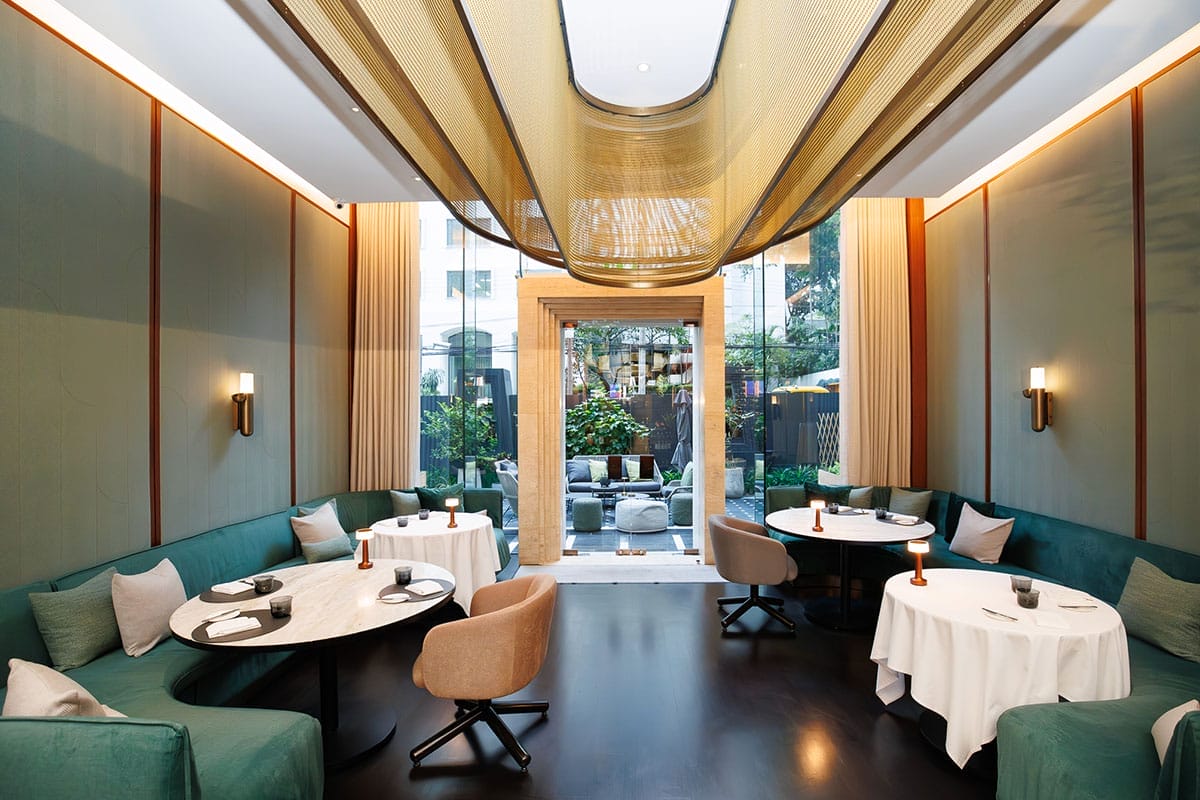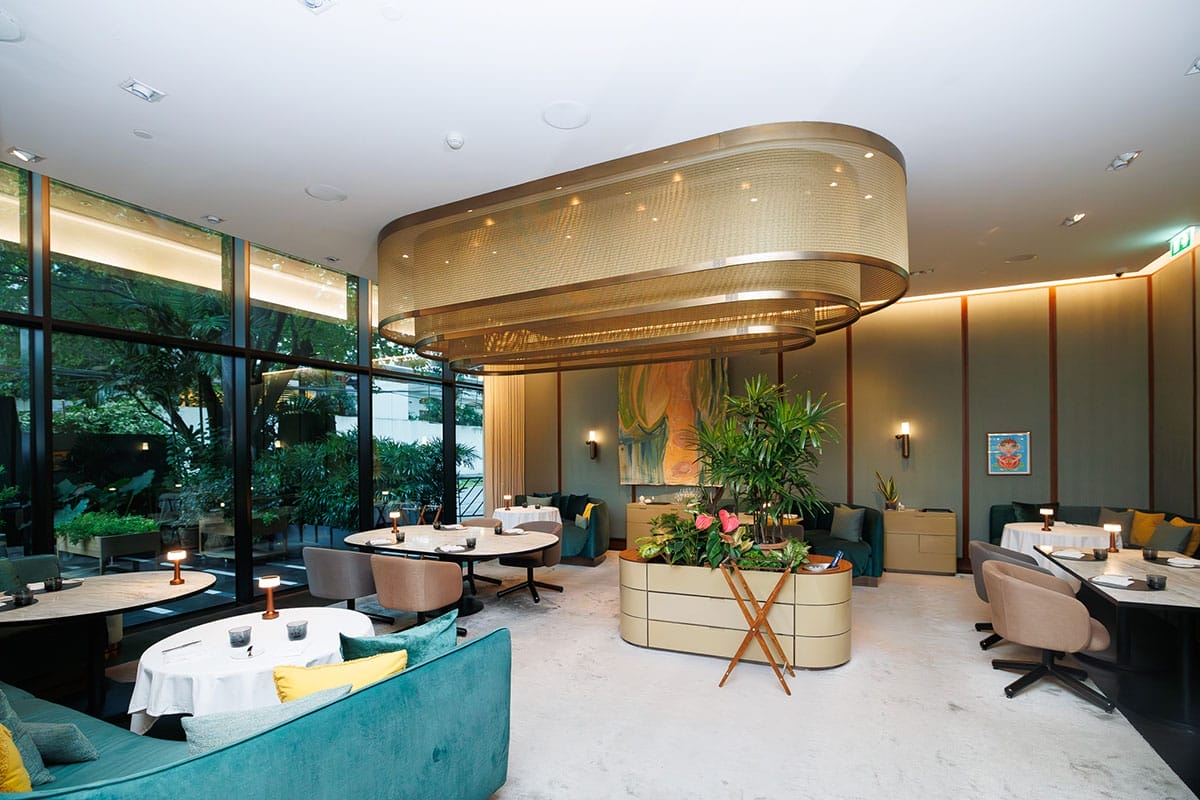The phrase ‘low-key Michelin restaurant’ might sound like a contradiction in terms. But as the world is still in the era of quiet luxury, under-the-radar Michelin-starred restaurants such as Igniv deserve their place in the sun. Located on the ground level of The St. Regis Bangkok in downtown, Igniv is the Southeast Asian outpost of Swiss cuisine’s poster boy, Chef Andreas Caminada.
The restaurants that Chef Caminada heads include Schloss Schauenstein in Fürstenau, Switzerland, a regular fixture on the World’s 50 Best Restaurants list for the past 14 years; Bad Ragaz in St. Moritz; and, most recently, Bangkok. Igniv (“nest” in Romansh) is based on the foraging nature of birds that build a home by gathering resources from the location where they land. Well, the same can be said for Michelin stars, five of which now nest within the restaurants helmed by the Swiss chef.

At Bangkok’s Igniv, which garnered a Michelin star in 2022, a cosy, bolt-hole-like environs pervades, embellished with fluorescent-lit art that shouts ‘Fake’. Here, Head Chef Arne Riehn is part-chemist and part-magician. The soft-spoken Swiss thirtysomething’s eyes literally light up as one would imagine Harry Potter’s would, when asked about the ways in which vegetables are pickled at Igniv. As with all chefs worth writing about, Riehn has a subtle yet down-to-earth demeanour.

Every gourmand with a waistline would know that dishes from degustation menus are not always light and are almost always creamed to the hilt. So, with the introduction of lightly pickled vegetables of the season, flavours become punchier, and the level of surprise is raised several notches. Those curious about the ‘hows’ and ‘whys’ of pickling will discover that the processes, according to Riehn, vary. “We use multiple techniques for our vegetables. For instance, the asparagus starter in our Spring menu is peeled, grilled, and compressed with olive oil and pepper, then finished off with salt and lemon vinaigrette,” he says. “The carrot used in our scallop dish is pickled using our unique pickling juice recipe, which involves peeling, slicing, vacuum-sealing with the pickling juice, and steaming it at 80° for 10 minutes.”

For main courses, Riehn adds that “our beetroot is salt-baked, sliced, and seasoned with salt and vinegar, while the eggplant beneath is baked, seared with pepper, and glazed with miso. Finally, the peas and beans in our croquet and salsa are perfectly balanced and seasoned with salt and vinegar”. It’s little touches and taste profiles such as these that keep things interesting.

As Igniv primarily uses local ingredients, Riehn says that he continues to have “amazing opportunities to experience a variety of vegetables and fruits from Thailand throughout the different seasons of the year”. Has this changed his culinary style? “I would say it didn’t change my approach to create new menus and dishes,” he replies. “Rather, it just gives me more flexibility to incorporate unique quality vegetables into our changing seasonal menu and adapt it to our cooking techniques from Switzerland.”

Still on the topic of keeping things interesting—as the menus at Igniv Bangkok evolve with the seasons, Riehn says that this offers the perfect opportunities to explore the vast potential for creativity with produce available locally. “As I maintain a close relationship with local farmers, producers, and experts in Thai ingredients, this connection enhances my understanding of local produce, which we gradually incorporate into every new menu,” he says.

For Igniv’s Summer 2025 menu, he emphasises “refreshing flavours inspired by the summer in Europe, while featuring well-known seasonal ingredients from Thailand like mangosteen and mango. The flavour profile is vibrant, filled with refreshing and citrusy notes”.




